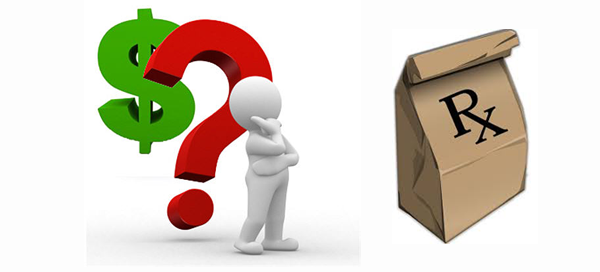How much will my medication cost?
There are many factors that influence how much you pay for your medication and it can be confusing trying to understand the final cost.
The short story is this: The government puts out a brand–specific list each month of medications that they will fund. If you are 14 or over and your medication is on the fully funded list, you pay $5 for a supply of up to 3 months. If your medication is on the partly funded list you will pay more than $5, but it will still not be the full cost of the medication. If your medication is not on either list, you will pay the full cost and price will vary between pharmacies. For anyone 13 and under medicines on the fully funded list are free, but there is still a charge for partly funded and un-funded medicines.
If you have been prescribed a partly-funded or non-funded medication, ask us if there is a fully funded alternative.
Some people become eligible for a prescription subsidy card and their medicines become free – read more here
For a more detailed explanation: Below is a list of terminologies explained that will help you to understand more fully what goes in to determining the final cost of your medicine.
A fully funded medicine is a medicine where the government has said they will pay for the full cost. However, they do charge a co-payment of $5. You can think of the co-payment like the excess on your car insurance. If you damage your car, you might pay the first $500 on the cost of repairs, and the insurance company will pay for the rest. For a fully funded medicine, you will only pay the first $5, and the government will pay for the rest. The pharmacy collects the $5 on behalf of the government. The co-payment is only charged on the first dispensing, repeats do not have the co- payment.
A partly funded medicine is where the government has decided to pay a set amount towards the cost, and you as the consumer have to pay the difference. A common example is a Ventolin inhaler. A Ventolin inhaler is a partly funded brand of salbutamol. The government has decided to pay $3.80 towards the cost of a Ventolin inhaler. However, the manufacturers price on the inhaler is $6.00. Therefore, you pay the difference of $2.20, plus the mark-up that the pharmacy decides to put on that difference. This can vary between pharmacies and it is to cover the cost of buying the inhaler. Remember $6.00 is the cost from the manufacturer, pharmacies buy most medicines from a medicine wholesaler (middle man), therefore the actual cost to the pharmacy is more than $6.00. At Temuka Pharmacy the amount you will pay for a Ventolin inhaler is $4.80, remember, if it is the first dispensing of the inhaler there is also the $5 co-payment, so it will cost you $9.80.
A non-funded medicine is a medicine where the government will not contribute any amount towards the cost of it. In this case, it is up to each individual pharmacy what they will charge for it. Therefore, it can be worth enquiring about cost at different pharmacies. Non-funded medicines include a lot of cough, cold and allergy medicine.
Prescription subsidy card – This is a card issued by pharmacies when you or your named family members together, have paid for 20 items within the pharmacy year (1 st February to 31 st January). Family members include a spouse or partner and children under 18. Children 18 and over are not included, even if they are still living at home.
Items included in the count:
- Fully funded medicines
- Partly funded medicines
- Medicines you have got from any pharmacy in New Zealand
- Items from named family members
Items not included in the count:
- Free medicines (including repeats)
- Non-funded medicines
- Items from un-named family members
Pharmac is the government organisation that decides which medicines the government will pay for completely, which medicines they will pay for part of, and which medicines they won’t pay for at all. They produce a list of these medicines, which is updated monthly. The list is brand specific. For most fully-funded medicines, this means they will only pay for one specific brand, if you want the same medicine, but made by a different company, you will have to pay for it yourself. A common example of this is the medicine omeprazole. The government currently pays for the Actavis brand of omeprazole. The Pfizer brand of omeprazole, called Losec, is not funded, and many people choose to pay for that brand themselves. The reason Pharmac chooses to only pay for one specific brand, is that it means they can negotiate a very good price on that brand. This means that New Zealanders get better value for the money spent on medicines.

